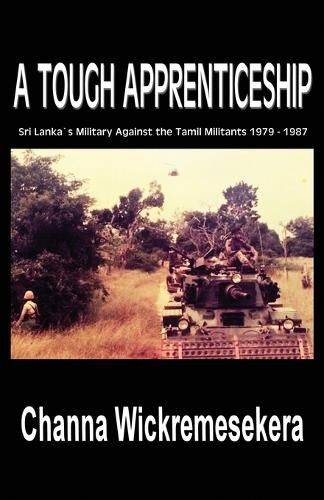Readings Newsletter
Become a Readings Member to make your shopping experience even easier.
Sign in or sign up for free!
You’re not far away from qualifying for FREE standard shipping within Australia
You’ve qualified for FREE standard shipping within Australia
The cart is loading…






This title is printed to order. This book may have been self-published. If so, we cannot guarantee the quality of the content. In the main most books will have gone through the editing process however some may not. We therefore suggest that you be aware of this before ordering this book. If in doubt check either the author or publisher’s details as we are unable to accept any returns unless they are faulty. Please contact us if you have any questions.
The Sri Lankan security forces that defeated the Liberation Tugers of Tamil Ealam in May 2009 evolved with that military conflict. Beginning as little more than a ceremonial establishment of a few thousand men, they matured during the sourse of the conflict into large, effective fighting forces that were eventually capable of completely defeating one of the most dangerous guerrilla organisations in the world.
Using a wide range of sources Wickremesekera examines the challenges faced by Sri Lanka’s military forces during the first phase of the armed conflict with the Tamil militants from the first deployment of the army in the North to combat terrorism in 1979 to the first major military operation conducted by the Sri Lankan armed forces in May 1987. It was a period of unprecedented stress and strain for a small Third World military with little or no experience in handling the threat from a ruthless and highly motivated enemy. The military’s response demonstrated their inadequate training as well as their political masters’ skewed view of the conflict, frequently leading to disastrous outcomes. But it was also a period of learning. Despite many bloody setbacks and failures the armed forces gradually learned the rudiments of fighting a guerrilla enemy, the culmination of this apprenticeship being the launching of ‘Operation Liberation’, the first brigade-strength operation conducted by the Sri Lankan army. Its conduct and the end result showd that the armed forces still had a lot to learn but now they were by no means the bumbling amateurs they were at the beginnig of the conflict.
$9.00 standard shipping within Australia
FREE standard shipping within Australia for orders over $100.00
Express & International shipping calculated at checkout
Stock availability can be subject to change without notice. We recommend calling the shop or contacting our online team to check availability of low stock items. Please see our Shopping Online page for more details.
This title is printed to order. This book may have been self-published. If so, we cannot guarantee the quality of the content. In the main most books will have gone through the editing process however some may not. We therefore suggest that you be aware of this before ordering this book. If in doubt check either the author or publisher’s details as we are unable to accept any returns unless they are faulty. Please contact us if you have any questions.
The Sri Lankan security forces that defeated the Liberation Tugers of Tamil Ealam in May 2009 evolved with that military conflict. Beginning as little more than a ceremonial establishment of a few thousand men, they matured during the sourse of the conflict into large, effective fighting forces that were eventually capable of completely defeating one of the most dangerous guerrilla organisations in the world.
Using a wide range of sources Wickremesekera examines the challenges faced by Sri Lanka’s military forces during the first phase of the armed conflict with the Tamil militants from the first deployment of the army in the North to combat terrorism in 1979 to the first major military operation conducted by the Sri Lankan armed forces in May 1987. It was a period of unprecedented stress and strain for a small Third World military with little or no experience in handling the threat from a ruthless and highly motivated enemy. The military’s response demonstrated their inadequate training as well as their political masters’ skewed view of the conflict, frequently leading to disastrous outcomes. But it was also a period of learning. Despite many bloody setbacks and failures the armed forces gradually learned the rudiments of fighting a guerrilla enemy, the culmination of this apprenticeship being the launching of ‘Operation Liberation’, the first brigade-strength operation conducted by the Sri Lankan army. Its conduct and the end result showd that the armed forces still had a lot to learn but now they were by no means the bumbling amateurs they were at the beginnig of the conflict.